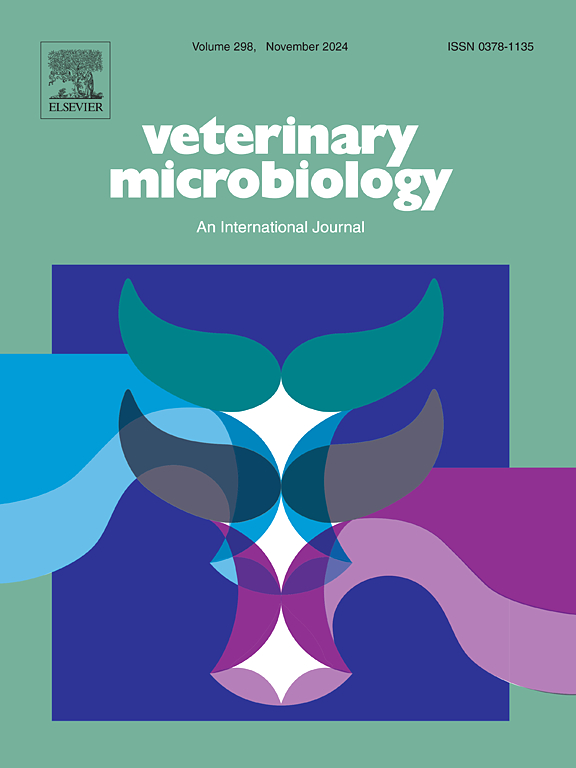构建表达麦角蛋白 AD 的重组恒温新城疫病毒并分析其抑菌作用。
IF 2.4
2区 农林科学
Q3 MICROBIOLOGY
引用次数: 0
摘要
本文章由计算机程序翻译,如有差异,请以英文原文为准。
Construction and bacteriostatic effect analyses of a recombinant thermostable Newcastle disease virus expressing cecropin AD
Cecropin AD (CAD), a hybrid antimicrobial peptide composed of the first 11 residues of cecropin A and last 26 residues of cecropin D, is a promising antibiotic candidate. Therefore, an efficient and convenient method for producing CAD is necessary for commercial applications. The Newcastle disease virus (NDV) has been widely used as a platform for gene delivery and exogenous protein expression. In this study, we constructed a recombinant NDV that expresses CAD. To obtain high expression of the CAD peptide, tandem repeats of the cad gene were inserted into the genomes of the thermostable NDV strain TS09-C using reverse genetic technology. The thermostable recombinant NDV, namely rTS-CAD3, showed thermostability and growth kinetics similar to those of their parental strain. A bacteriostatic test showed that rTS-CAD3 inhibited Staphylococcus aureus (gram-positive bacteria) and Escherichia coli (gram-negative bacteria) in vitro. We further determined the bacteriostatic effects of rTS-CAD3 expressed CAD against S. aureus in skin wound infections. The results showed that rTS-CAD3 subcutaneously injection improved wound healing and reduced S. aureus decolonization. In summary, our results indicate that the rTS-CAD3 expressing CAD peptide is a potent antimicrobial agent against S. aureus and E. coli and may be applied to accelerate wound healing in farm animals.
求助全文
通过发布文献求助,成功后即可免费获取论文全文。
去求助
来源期刊

Veterinary microbiology
农林科学-兽医学
CiteScore
5.90
自引率
6.10%
发文量
221
审稿时长
52 days
期刊介绍:
Veterinary Microbiology is concerned with microbial (bacterial, fungal, viral) diseases of domesticated vertebrate animals (livestock, companion animals, fur-bearing animals, game, poultry, fish) that supply food, other useful products or companionship. In addition, Microbial diseases of wild animals living in captivity, or as members of the feral fauna will also be considered if the infections are of interest because of their interrelation with humans (zoonoses) and/or domestic animals. Studies of antimicrobial resistance are also included, provided that the results represent a substantial advance in knowledge. Authors are strongly encouraged to read - prior to submission - the Editorials (''Scope or cope'' and ''Scope or cope II'') published previously in the journal. The Editors reserve the right to suggest submission to another journal for those papers which they feel would be more appropriate for consideration by that journal.
Original research papers of high quality and novelty on aspects of control, host response, molecular biology, pathogenesis, prevention, and treatment of microbial diseases of animals are published. Papers dealing primarily with immunology, epidemiology, molecular biology and antiviral or microbial agents will only be considered if they demonstrate a clear impact on a disease. Papers focusing solely on diagnostic techniques (such as another PCR protocol or ELISA) will not be published - focus should be on a microorganism and not on a particular technique. Papers only reporting microbial sequences, transcriptomics data, or proteomics data will not be considered unless the results represent a substantial advance in knowledge.
Drug trial papers will be considered if they have general application or significance. Papers on the identification of microorganisms will also be considered, but detailed taxonomic studies do not fall within the scope of the journal. Case reports will not be published, unless they have general application or contain novel aspects. Papers of geographically limited interest, which repeat what had been established elsewhere will not be considered. The readership of the journal is global.
 求助内容:
求助内容: 应助结果提醒方式:
应助结果提醒方式:


